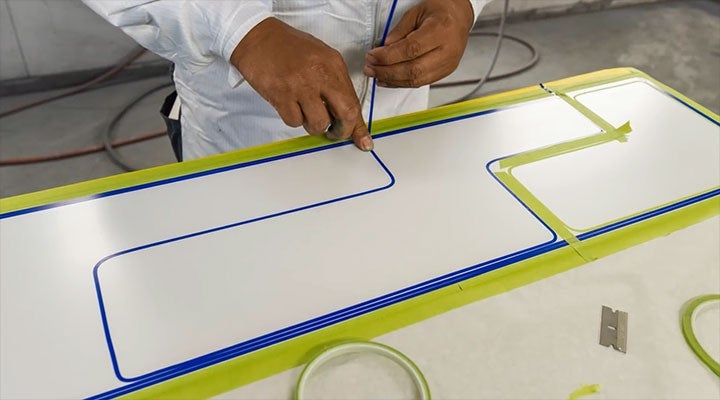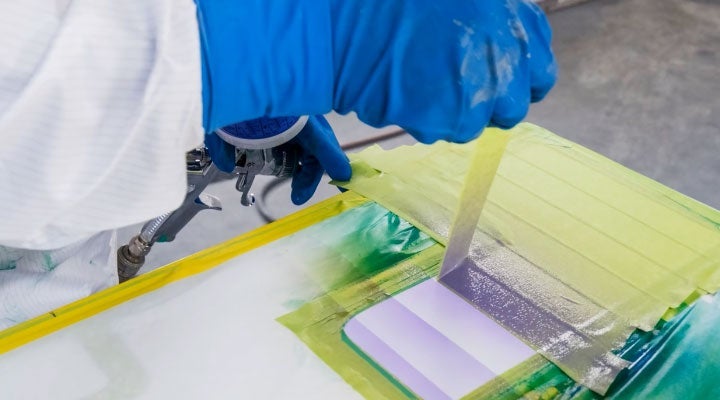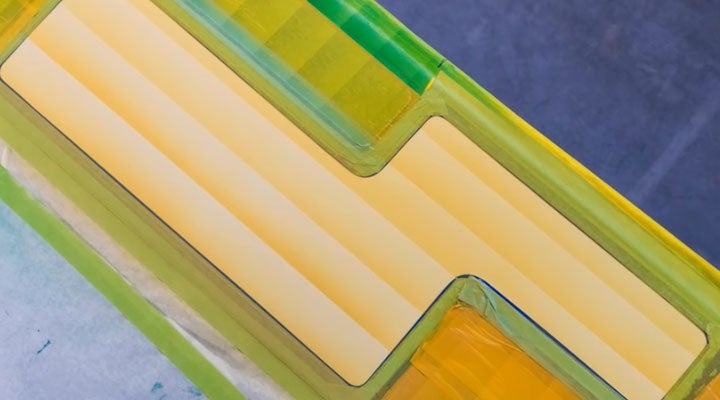It’s a high-power contrast of unexpected colors and free-flowing shapes with symmetrical lines and steady gun work. "To me, tape shading is an old lowrider or hot rod type of effect," says Mitch Lanzini, owner of Lanzini Body Works. "I picture Larry Watson or Barris using this technique in the '50s or '60s."
Tape Shading Technique - Mitch Lanzini
Mitch also says this technique is ideal for beginning painters looking to build confidence. "It's so, so easy, doesn’t take much time and the effect is cool." He also believes his paint of choice, the Envirobase® High Performance waterborne basecoat system, is ideal for this effect. "That's the thing with this paint, it shades so nicely. It's great for shadows and blends."
Watch the video below to see Mitch's process, or download the step by step process tutorial for reference when practicing this tape shading technique.
How To Create a Classic Tape Shading Effect
Step 1 – Laying the Framework
To create a base for the color to pop against, Mitch sprays a coat of White (T400) and then a coat of White Pearl (T453) with Tinted Clear Additive (T490) (1:9 ratio). Once dry, he masks his design. The irregular shapes feel like puzzle pieces, creating a '60s vibe.
Step 2 – Center and Edge Taping
To delineate the tape shade sections, Mitch masks a gutter in the design. This will create a wide, white stripe between the colors for extra pop.

Step 3 – Taping for Purple Shades
Mitch lays out the bars using 1.5-inch tape, which gives plenty of room for shadowing. "For a sharper edge, I overlapped the tape about an eighth of an inch to avoid any bleed."
Step 4 – Spraying Purple Shades
Mitch uses a SATA 4400B Mini Jet with 1.2 air cap at 20 psi for spraying the tape shades. The color is Violet (T443) with Tinted Clear Additive (T490) (1:9 ratio).
Step 5 – Remove Tape
After shading a line, Mitch removes a row of tape and shoots the next. A steady, even spray is vital for a consistent pattern.

Step 6 – Green Shade Blends
Mitch uses the same process for the next section, painted in Green (T430) with Tinted Clear Additive (T490) (1:9 ratio).
Step 7 – Yellow Stripes
Notice that these stripes are perpendicular to the purple and green stripes and adds some nice directional contrast. The color is Yellow (T429) with Tinted Clear Additive (T490) (1:9 ratio).

Step 8 – Final Product
Mitch finishes the project by clearing it with One Visit® Appearance Clearcoat (EC750). "I love the EC750. It's really fast. Bam! Bam! You're done."
